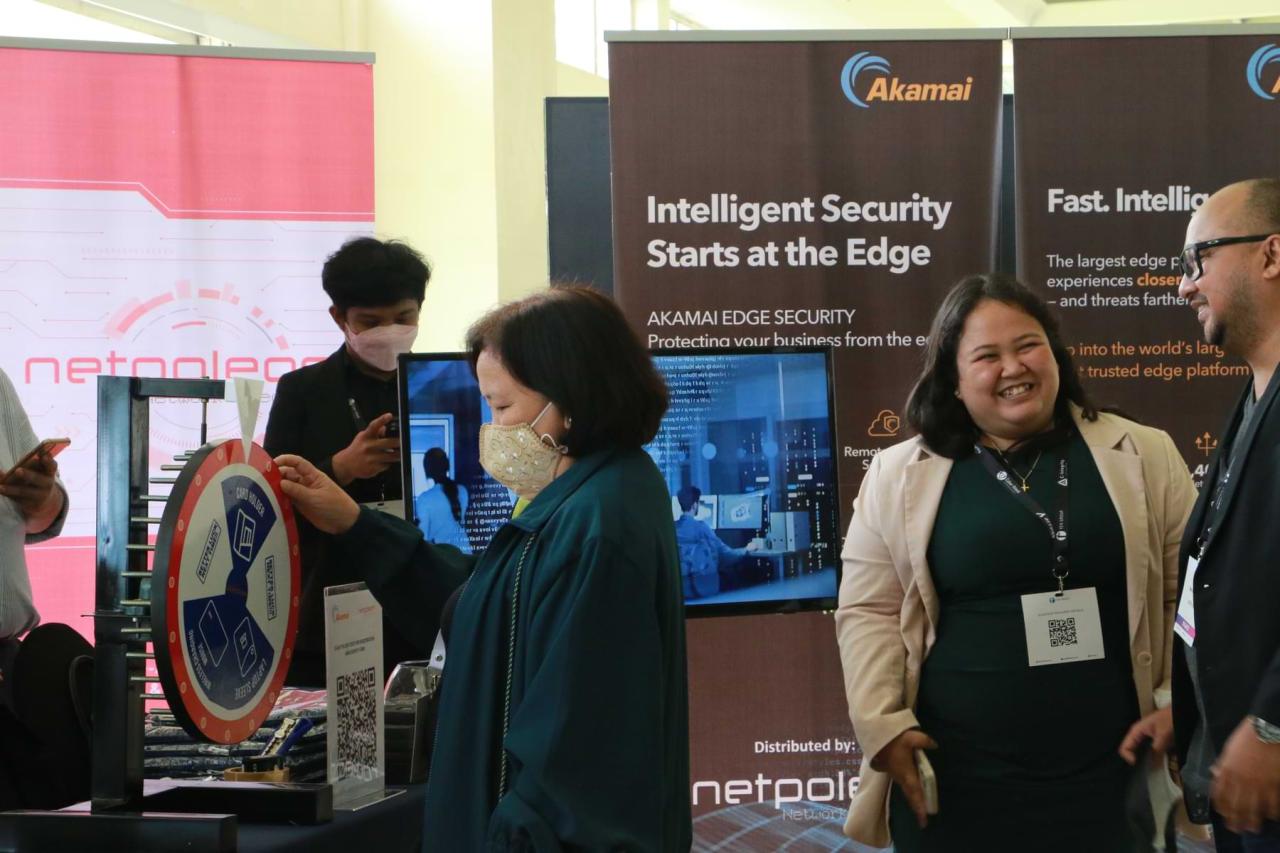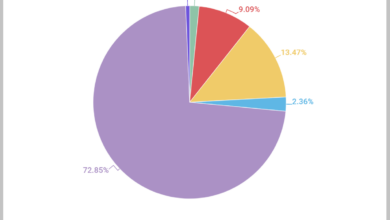
Cyber Threat to Labor Day Weekend
Cyber threat to Labor Day weekend: It’s a scary thought, isn’t it? Long weekends mean more relaxed security practices, more online shopping, and more opportunities for cybercriminals to strike. This Labor Day, let’s be prepared. We’ll explore the heightened risks, the common attack vectors, and, most importantly, how to protect ourselves and our businesses from falling victim to these digital bandits.
We’re talking phishing scams, ransomware attacks, and the ever-present threat of DDoS (distributed denial-of-service) attacks – all aiming to spoil your well-deserved break.
This post dives deep into the specific vulnerabilities exploited during holiday weekends, examining real-world examples and statistics to illustrate the alarming increase in cyberattacks during these periods. We’ll look at how these attacks target individuals and businesses differently, and explore the devastating economic consequences of a successful breach. Think of it as your pre-Labor Day cybersecurity survival guide!
Increased Vulnerability During Labor Day Weekend
Labor Day weekend, like other long holiday weekends, presents a heightened risk of cyberattacks. The decreased workforce and relaxed security protocols often exploited by cybercriminals create a perfect storm for successful breaches. This period sees a significant uptick in malicious activity as threat actors capitalize on the reduced vigilance of both individuals and organizations.The increased vulnerability during Labor Day weekend stems from several factors.
Many employees are out of the office, leaving fewer staff to monitor systems and respond to potential threats. Furthermore, individuals often relax their usual cybersecurity practices while enjoying time off, making them easier targets for phishing scams and malware. This combination of reduced monitoring and decreased user caution creates a significantly larger attack surface for malicious actors.
Common Vulnerabilities Exploited During Labor Day Weekend
Cybercriminals frequently target common vulnerabilities during holiday weekends. These include exploiting weaknesses in outdated software, leveraging phishing campaigns disguised as holiday promotions or urgent notifications, and targeting remote access points left unsecured due to the absence of IT staff. The urgency of the situation (e.g., a fake shipping notification) combined with the decreased likelihood of immediate detection increases the success rate of these attacks.
Examples of Specific Attack Vectors
Phishing emails mimicking holiday promotions or urgent service disruptions are a common tactic. For example, an email might falsely claim a package delivery requires immediate action, linking to a malicious website that installs malware. Another common vector involves exploiting vulnerabilities in remote desktop protocols (RDP) or virtual private networks (VPNs) left open or inadequately secured while IT staff are unavailable.
This allows attackers to gain unauthorized access to sensitive company data. Finally, attacks targeting individuals’ personal devices, exploiting vulnerabilities in mobile applications or insecure Wi-Fi networks frequented during travel, are also prevalent.
Statistics on Increased Cyberattacks During Labor Day Weekends
While precise, publicly available statistics specifically isolating Labor Day weekend cyberattack increases are scarce due to the complexities of data collection and attribution, general trends across long weekends strongly suggest a rise in activity. Reports from various cybersecurity firms consistently show a noticeable spike in phishing attempts, malware infections, and ransomware attacks during extended holiday periods. Although specific Labor Day weekend figures aren’t readily available, the overall pattern observed during similar long weekends indicates a substantial increase in cybercrime compared to regular weekdays.
This is further supported by anecdotal evidence from cybersecurity professionals who often report a higher volume of incident responses during such periods.
Types of Cyber Threats Targeting Labor Day Weekend

Labor Day weekend, a time for relaxation and celebration, unfortunately also presents a heightened risk of cyberattacks. Criminals often capitalize on the increased online activity and potential for lax security measures associated with holiday periods. Understanding the prevalent types of attacks and their impact is crucial for individuals and businesses alike to stay protected.Phishing, ransomware, and Distributed Denial-of-Service (DDoS) attacks are among the most common threats during this time.
These attacks leverage the distractions and less vigilant security posture often present during extended weekends.
Phishing Attacks During Labor Day Weekend
Phishing attacks often increase during Labor Day weekend, exploiting the tendency for people to be less cautious online while enjoying their time off. These attacks often come in the form of emails or text messages that appear to be from legitimate sources, such as banks, online retailers, or shipping companies. They may contain urgent-sounding requests for personal information, such as login credentials or credit card details, or links to malicious websites.
The lure might be a “Labor Day sale,” a “shipping notification for your Labor Day order,” or even a fake charity appeal related to a Labor Day event. For businesses, these phishing attacks can target employees who may be less vigilant due to the holiday, potentially leading to data breaches and financial losses. The impact on individuals could include identity theft, financial fraud, and the compromise of personal accounts.
Ransomware Attacks During Labor Day Weekend
Ransomware attacks, while not exclusive to holidays, often see a spike during Labor Day weekend. With many employees out of the office, the response time to a ransomware attack is slower, allowing attackers more time to encrypt data and demand a ransom. For businesses, this can lead to significant downtime, data loss, and financial repercussions. The impact on individuals might involve the loss of personal files, photos, or important documents.
With Labor Day weekend travel ramping up, cyber threats are unfortunately also on the rise. We’re seeing a surge in phishing attempts targeting vacationers, so it’s more crucial than ever to bolster your online defenses. Understanding how to manage cloud security effectively is key, and that’s where solutions like those discussed in this article on bitglass and the rise of cloud security posture management become invaluable.
Protecting your data, especially while you’re away from your usual workspace, is vital to avoid a ruined long weekend.
A hypothetical scenario could involve a small bakery, “Sweet Surrender,” experiencing a ransomware attack on their point-of-sale system. The attack encrypts all sales data and customer information, crippling their operations during the busy Labor Day weekend. The recovery process would involve paying a ransom (potentially compromising their business further) or spending considerable time and resources restoring their systems from backups.
Distributed Denial-of-Service (DDoS) Attacks During Labor Day Weekend
DDoS attacks aim to overwhelm a target’s online infrastructure, making it inaccessible to legitimate users. While not directly targeting personal information, these attacks can severely disrupt businesses, especially e-commerce platforms anticipating a surge in online orders during the holiday weekend. A successful DDoS attack can lead to lost revenue, damaged reputation, and strained customer relationships. The impact on individuals might be indirect, manifested in the inability to access online services they rely on, such as online banking or shopping websites.
Imagine a large online retailer facing a DDoS attack just as their Labor Day sale begins; the resulting downtime could cost them millions in lost sales and potentially damage their brand image.
Impact on Businesses and Critical Infrastructure

Labor Day weekend, a time for relaxation and family gatherings, can ironically be a period of heightened vulnerability for businesses and critical infrastructure due to decreased security awareness and staffing levels. Cybercriminals often exploit these reduced defenses, launching attacks that can have devastating consequences. The impact extends beyond simple data breaches; it can cripple operations, damage reputations, and inflict significant financial losses.The disruption of business operations during Labor Day weekend cyberattacks can manifest in various ways.
Reduced staffing means fewer eyes on potential threats, slower incident response times, and a potential lack of expertise available to address sophisticated attacks. This vulnerability is amplified by the fact that many employees are out of the office, potentially hindering access to critical systems and data recovery processes. A successful attack could lead to system downtime, halting production, disrupting supply chains, and ultimately impacting customer service.
Vulnerabilities in Critical Infrastructure
Critical infrastructure, including power grids, water treatment facilities, and transportation networks, faces unique challenges during Labor Day weekend. Reduced staffing levels, combined with increased reliance on automated systems, create an opportune window for cybercriminals. A successful attack on a power grid, for instance, could cause widespread blackouts, impacting not only businesses but also essential services like hospitals and emergency response systems.
Similarly, compromising a water treatment facility could lead to contamination, posing serious public health risks. The interconnected nature of these systems means that an attack on one component can trigger a cascade effect, impacting multiple sectors and causing widespread disruption.
Economic Consequences of Cyberattacks
The economic consequences of successful cyberattacks during the holiday can be substantial. Direct costs include the expenses associated with incident response, data recovery, system repairs, and legal fees. Indirect costs can be even more significant, encompassing lost revenue due to business downtime, damage to reputation, loss of customer trust, and potential fines for non-compliance with data protection regulations.
The 2017 NotPetya ransomware attack, for example, caused billions of dollars in damages across various industries, highlighting the potential for widespread economic disruption. The longer the downtime, the greater the economic impact, especially for businesses operating on tight margins.
Impact Across Sectors
The following table illustrates the potential impact of various cyberattacks on different sectors during Labor Day weekend:
| Cyber Threat | Manufacturing | Healthcare | Finance | Energy |
|---|---|---|---|---|
| Ransomware | Production halt, supply chain disruption | Patient data breach, disruption of medical services | Financial losses, disruption of online banking | Power outages, disruption of energy distribution |
| Phishing | Data breaches, intellectual property theft | Data breaches, HIPAA violations | Financial fraud, account takeovers | Compromise of control systems |
| Denial-of-Service (DoS) | Website downtime, loss of sales | Disruption of online appointment scheduling | Disruption of online banking and trading | Disruption of smart grid operations |
| Malware | Industrial control system compromise | Data breaches, disruption of medical devices | Data theft, financial fraud | Compromise of critical infrastructure |
Protective Measures and Mitigation Strategies: Cyber Threat To Labor Day Weekend
Labor Day weekend, a time for relaxation and celebration, shouldn’t be overshadowed by the threat of cyberattacks. Taking proactive steps to enhance your cybersecurity posture is crucial to ensuring a safe and enjoyable long weekend, both for individuals and businesses. By implementing robust security measures and fostering a culture of cybersecurity awareness, we can significantly reduce our vulnerability to these attacks.
This section Artikels practical strategies individuals and businesses can employ to mitigate the risks associated with increased cyber threats during Labor Day weekend. These strategies cover various aspects of cybersecurity, from software implementation to employee training, providing a comprehensive approach to protection.
Strong Password Management and Multi-Factor Authentication
Strong passwords are the first line of defense against unauthorized access. Weak or easily guessable passwords are a major vulnerability. Employing a password manager to generate and securely store complex, unique passwords for each online account is highly recommended. Furthermore, multi-factor authentication (MFA) adds an extra layer of security by requiring multiple forms of verification, such as a password and a one-time code sent to your phone or email.
This makes it significantly harder for attackers to gain access even if they obtain your password. For example, if an attacker manages to steal your password, they would still need access to your phone or email to complete the login process, significantly reducing the risk of a successful breach.
Security Software and Practices
Keeping your software updated is paramount. Regularly updating your operating system, applications, and antivirus software ensures that the latest security patches are installed, protecting against known vulnerabilities. Employing a reputable antivirus program with real-time protection and a firewall is crucial for detecting and preventing malware infections. Additionally, practicing safe browsing habits, such as avoiding suspicious websites and links, is essential.
Consider using a Virtual Private Network (VPN) when using public Wi-Fi to encrypt your internet traffic and protect your data from potential eavesdroppers. A VPN creates a secure tunnel between your device and the internet, making it more difficult for hackers to intercept your information.
Employee Training and Awareness Programs
For businesses, employee training is non-negotiable. Phishing attacks, a common tactic used by cybercriminals, often rely on tricking employees into revealing sensitive information. Regular security awareness training programs that educate employees about phishing scams, malware, and other cyber threats are crucial. Simulations of phishing attacks can help employees recognize and report suspicious emails or messages. Training should cover best practices for password management, safe browsing, and recognizing social engineering attempts.
The 2022 Verizon Data Breach Investigations Report highlighted the significant role of human error in data breaches, emphasizing the importance of comprehensive employee training.
Cybersecurity Awareness Campaigns and Public Service Announcements
Raising public awareness about cybersecurity threats, especially during periods of increased vulnerability like Labor Day weekend, is crucial for mitigating risks. Effective campaigns leverage multiple channels to deliver clear, concise, and actionable advice. This involves strategic communication design and the utilization of various media platforms to reach a broad audience.
With Labor Day weekend approaching, it’s crucial to be extra vigilant about online security. We’re all enjoying the long weekend, but cybercriminals aren’t taking a break; they’re actively looking for vulnerabilities. Building robust, secure applications is key, and that’s where understanding the future of development comes in, like exploring options such as domino app dev the low code and pro code future , which can help improve security protocols.
So, enjoy the holiday, but remember to stay safe online!
Public Service Announcement Design
A compelling public service announcement (PSA) needs to grab attention quickly and deliver its message clearly. Imagine a 30-second video PSA opening with a family happily preparing for a Labor Day barbecue, their phones and laptops visibly present. Suddenly, a jarring sound effect signifies a cyberattack – perhaps a visual glitch or a distorted screen. The scene shifts to show the family’s distress as they realize their financial information or vacation photos have been compromised.
The PSA then transitions to a calm, reassuring tone, outlining simple steps to protect their devices and data. The visuals would be clear and concise, featuring text overlays with key takeaways such as “Update your software,” “Use strong passwords,” and “Be wary of suspicious emails.” The closing shot would feature the family again, this time safely enjoying their holiday, with a website or phone number for additional cybersecurity resources displayed prominently.
This approach combines emotional impact with practical advice, making it memorable and effective.
Social Media Post Series for Cybersecurity Best Practices
A series of social media posts could reinforce the PSA’s message. For example:
- Post 1 (Image: A phone with a lock icon): “Labor Day weekend getaways shouldn’t include cyber headaches! Make sure your phone’s security is up to par. Enable two-factor authentication and install reputable security apps.”
- Post 2 (Image: A laptop with a warning symbol): “Don’t let free Wi-Fi ruin your holiday! Avoid accessing sensitive information on public networks. Use a VPN for added protection.”
- Post 3 (Image: A shopping cart icon): “Online shopping deals are tempting, but be cautious! Only shop on secure websites (look for ‘https’) and avoid clicking suspicious links.”
- Post 4 (Image: A family enjoying Labor Day): “Have a safe and secure Labor Day weekend! Remember to practice good cybersecurity habits to protect your devices and personal information.”
These posts utilize engaging visuals and provide concise, actionable advice, tailored to the specific risks associated with holiday activities. Using relevant hashtags like #CyberSafety #LaborDaySafety #OnlineSecurity would further expand reach.
Elements of an Effective Cybersecurity Awareness Campaign, Cyber threat to labor day weekend
An effective campaign requires a multi-pronged approach. It should target different demographics using appropriate channels and messaging. Clear and concise language, avoiding technical jargon, is paramount. The campaign should focus on actionable steps, providing practical advice rather than overwhelming users with complex technical details. Regular reinforcement of key messages through different channels (social media, email, website banners) ensures sustained impact.
Measuring the campaign’s effectiveness through metrics such as website visits, social media engagement, and reported incidents is essential for future improvement.
Key Messages for a Cybersecurity Awareness Campaign
A successful campaign hinges on delivering clear, concise, and memorable messages. The key messages should be:
- Strong Passwords: Use unique, strong passwords for all your online accounts.
- Software Updates: Regularly update your software and operating systems to patch security vulnerabilities.
- Phishing Awareness: Be cautious of suspicious emails, links, and attachments. Never click on links from unknown senders.
- Secure Wi-Fi: Avoid using public Wi-Fi for sensitive transactions.
Use a VPN if necessary.
- Data Backup: Regularly back up your important data to prevent data loss in case of a cyberattack.
- Multi-Factor Authentication (MFA): Enable MFA whenever possible for an extra layer of security.
These messages are easily understood and applicable to everyday online activities, making them highly relevant to the general public.
Law Enforcement and Response Strategies
Law enforcement agencies play a crucial role in mitigating the impact of cyberattacks, especially during periods of increased vulnerability like Labor Day weekend. Their responsibilities extend from investigating incidents to prosecuting perpetrators and collaborating with other agencies to ensure a coordinated response. Effective law enforcement action is vital for deterring future attacks and maintaining public trust in digital security.The process of reporting cybercrimes typically involves contacting the appropriate agency based on the nature and scope of the attack.
For federal crimes or attacks affecting critical infrastructure, the FBI’s Internet Crime Complaint Center (IC3) is a primary point of contact. State and local law enforcement agencies also handle cybercrime investigations, often collaborating with federal authorities on larger-scale incidents. Victims should gather as much evidence as possible, including screenshots, logs, and communication records, before making a report. Detailed information facilitates faster and more effective investigations.
Challenges Faced by Law Enforcement in Investigating and Prosecuting Cybercriminals
Investigating and prosecuting cybercriminals present unique challenges for law enforcement. The transnational nature of cybercrime, with perpetrators often located in different countries with varying legal jurisdictions, complicates investigations. The rapid evolution of cyberattack techniques and the use of sophisticated anonymization tools also pose significant obstacles. Gathering digital evidence that meets legal standards for admissibility in court is complex and resource-intensive.
Furthermore, a shortage of specialized cybersecurity professionals within law enforcement agencies can hinder the effective investigation and prosecution of cybercriminals. The need for international cooperation and information sharing between agencies is paramount to overcome these challenges.
Hypothetical Scenario: Large-Scale Cyberattack Response
Imagine a scenario where a sophisticated ransomware attack targets multiple financial institutions on Labor Day weekend. The attackers encrypt sensitive data, demanding a substantial ransom for its release. The FBI’s Cyber Division would likely lead the federal response, coordinating with the Cybersecurity and Infrastructure Security Agency (CISA) to assess the extent of the damage and identify affected critical infrastructure.
Local law enforcement agencies would assist in investigating specific incidents within their jurisdictions, working with the FBI to identify the perpetrators and trace the source of the attack. The investigation would involve analyzing network logs, malware samples, and financial transactions to build a case for prosecution. Public awareness campaigns would also be launched to inform the public about the incident and provide guidance on preventing similar attacks.
This coordinated multi-agency response would aim to contain the damage, recover the encrypted data (where possible), and bring the perpetrators to justice.
Closure
So, as you fire up the grill and get ready for that Labor Day BBQ, remember this: cybersecurity shouldn’t take a holiday. By taking proactive steps, staying informed, and being vigilant about online activity, we can all enjoy a safe and secure long weekend. Don’t let a cyberattack ruin your celebrations! Remember to update your software, be wary of suspicious emails, and report anything fishy immediately.
Let’s make this Labor Day a safe one, both online and off!
FAQ Compilation
What are some common phishing scams targeting Labor Day?
Expect emails offering amazing Labor Day deals, fake shipping notifications, or requests for urgent financial information, all designed to trick you into revealing personal data or clicking malicious links.
How can I protect my small business over Labor Day?
Ensure all software is updated, remind employees of security protocols, and consider implementing multi-factor authentication for all accounts. Regular backups are crucial too!
What should I do if I suspect a cyberattack?
Disconnect from the internet immediately, change your passwords, report the incident to the authorities, and contact a cybersecurity professional.
Are my smart home devices vulnerable during Labor Day?
Yes! Make sure your smart home devices have strong passwords and are updated with the latest security patches. Consider disabling remote access when not needed.





